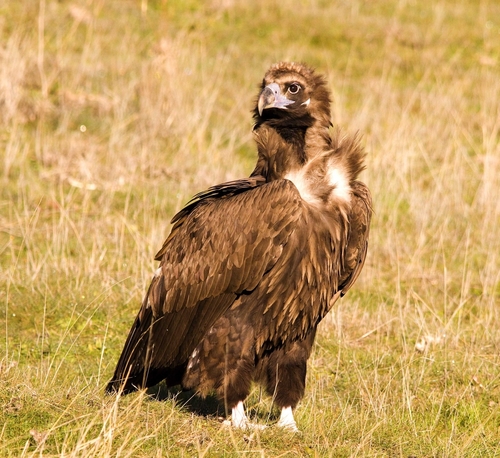
Cinereous Vulture
The majestic Cinereous Vulture soars with an impressive wingspan over rugged landscapes. Its dark plumage and formidable presence mark it as a top scavenger, crucial for ecosystem balance. These solitary birds typically nest in trees or cliffs, showcasing their adaptability and vital ecological role by consuming carrion.
20-40 years
Lifespan
8.2 - 14.1 kg
Weight
Length: 1.0922 - 1.1999 m
Size
Brown, Black
Color
Near Threatened
Conservation Status
Decreasing
Population Trend
Characteristics
Aegypius monachus, commonly known as the Cinereous Vulture, is one of the largest raptors in the world. It inhabits mountainous and forested areas across Europe and Asia. This bird is distinguished by its dark plumage, large wingspan, and powerful build. It primarily feeds on carrion, playing a crucial role in the ecosystem by cleaning up dead animals.
Distribution Range of the Cinereous Vulture
The Aegypius monachus, commonly known as the Cinereous Vulture or Eurasian Black Vulture, is native to a broad range across southern Europe, Asia, and parts of the Middle East. Its geographical distribution includes countries such as Spain, Portugal, Greece, Turkey, Russia, Kazakhstan, Mongolia, and China, among others. The species is also found in parts of the Middle East, like Iran and Afghanistan, though these populations are less dense.
Cinereous Vulture's Habitat
Environmental Conditions
The Cinereous Vulture typically inhabits temperate and subtropical regions, favoring open landscapes like semi-arid steppes, mountain foothills, and plateaus. It often resides in areas with sparse tree cover, which provide suitable nesting sites. The vulture is adapted to a range of altitudes, from sea level up to 2,000 meters, depending on the region.
Ecological Niche
This species is primarily a scavenger, feeding on carrion from a variety of large mammals. Its ecological niche involves locating and consuming carcasses, which helps control disease spread and recycle nutrients back into the ecosystem. The Cinereous Vulture plays a crucial role in maintaining the health of its native ecosystems by disposing of dead animals.
Copyright @ Nature Style Limited. All Rights Reserved.
 English
English